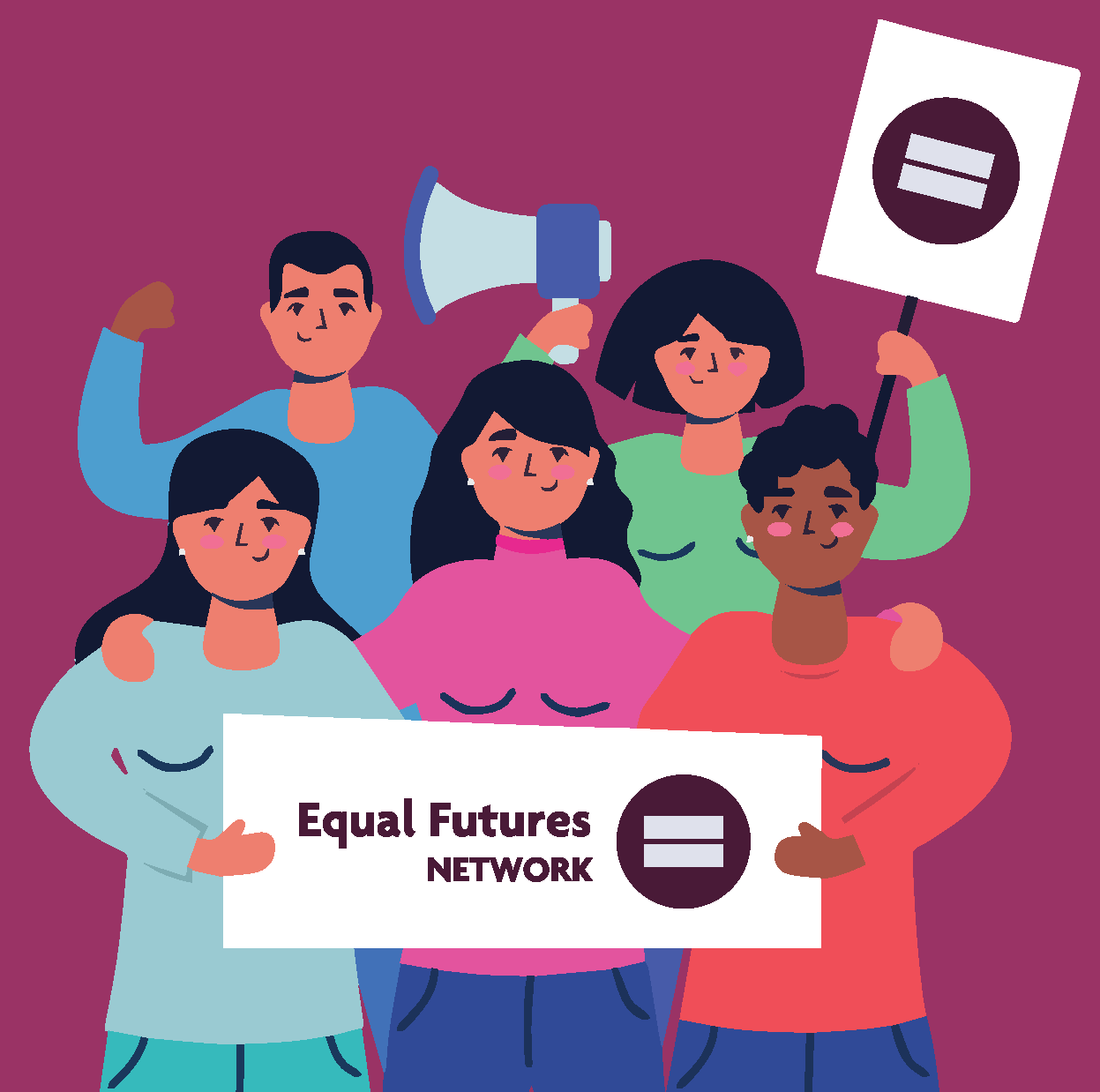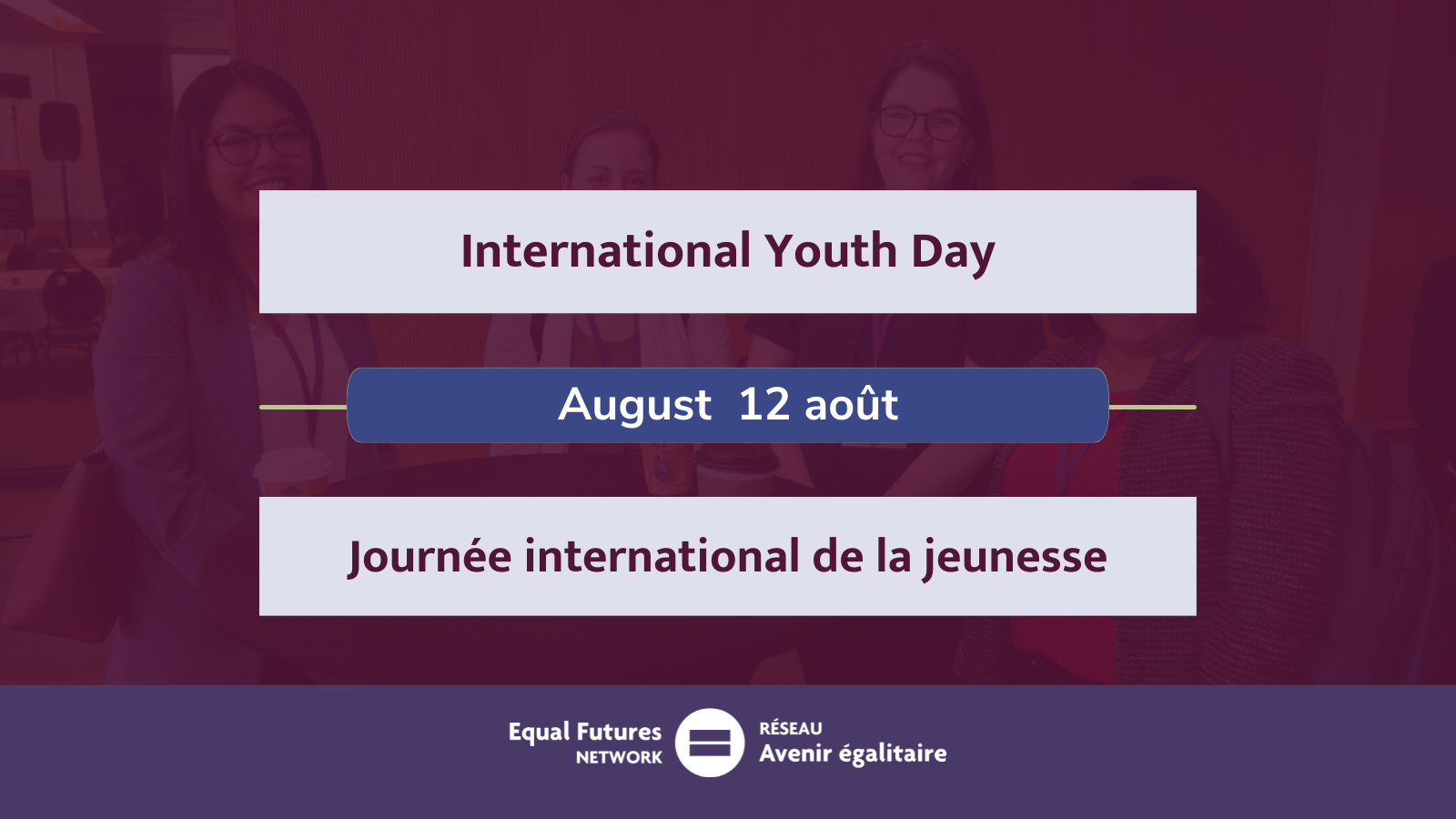
On May 25, 2022, the Equal Futures Network, in partnership with the Canadian chapter of the International Youth Alliance for Family Planning (IYAFP), convened a group of youth and youth-stakeholders for a 90-minute interactive virtual incubator session that explored youth engagement as a central part of the Equal Futures Network’s ongoing community development. Participants shared their insights on key issues creating barriers for meaningful youth inclusion and how to move past these to create spaces that actively promote practical and meaningful engagement while connecting local youth movements in Canada with like-minded youth movements around the world.
To kick off the session participants heard from Arissa Roy, Founder and CEO of Project Power Global and youth advocate for education equity. Arissa shared her journey to creating local action for global issues and her experience as a youth activist. Then, representatives from IYAFP shared the preliminary findings from their youth engagement environment scan and the draft framework for an organizational youth engagement strategy for CanWaCH.
This was our second incubator session that focused on the importance of youth engagement and how to facilitate connections and strengthen collaboration among Canadian and international youth organizations to drive progress around gender equality around the world. A total of 22 participants attended the session and participated in the breakout groups. Here is what we heard:
Connecting Local to Global Youth Movements
Youth engagement on the Sustainable Development Goals is low in Canada when compared to other countries. Some key questions to ask ourselves: What are the different barriers that affect the participation of youth and inclusion of their perspectives and experiences in programming, services and supports? How can we connect youth in Canada with other global movements so that we can better share and exchange resources, explore new opportunities for growth, build new partnerships and find innovative ways to strengthen our collective work? Answering these questions will help to find the pathway to encourage youth to become actively engaged and have agency over creating the solutions to issues that affect their lives.
1. Making Spaces Safe and Accessible:
Youth face unique barriers when it comes to participation. Things like minimum age requirements to attend conferences/events, access to safe transportation, language and economic barriers are just some examples of things that can hinder their ability to engage in decision-making spaces. For organizations to meaningfully work with youth, systemic and operational frameworks need to be re-examined in order to create spaces that are as low barrier as possible to create equal opportunity for youth participation. What does this look like in practice? Providing subsidies for travel to participate in important international fora, removing minimum age requirements on opportunities, providing translation so that dialogue across languages is fostered, compensating youth fairly for their time and expertise, and providing subsidies for services like the internet, are all ways that can enable meaningful youth participation.
2. Mitigating Power Imbalances:
It is absolutely paramount to avoid increasing power imbalances when engaging with youth – both between youth and other stakeholders and also when bringing Canadian youth together with global youth to advocate for global issues. In particular, identifying decolonial approaches to youth advocacy and engagement while ensuring that stakeholders are undergoing their own diversity, equity and inclusion work will help establish balance of power when building these relationships. For example, practicing transformative organizing – the method of recognizing how current, dominant ideologies are harmful and are reinforced to normalize oppressive societal values and practices – is essential to this work. Co-creation, collaboration, centering youth voices should be prioritized while also practicing active listening are important steps to resetting inherent systemic and structural power imbalances.
3. Creating Mutually Beneficial Opportunities:
Creating sustainable youth movements begins with ensuring that their participation isn’t seen as tokenistic – for example, a single seat for one youth on a panel can be a tokenistic form of youth engagement – meaningful inclusion of youth can lead to improved recruitment and retention rates . In many instances, youth recruitment relies on outreach within an organization’s existing networks. While effective, this practice may unintentionally be exclusionary. Youth are not a homogenous group and there is a need to figure out how to best reach and engage more marginalized youth through recruitment processes.
Secondly, youth need to be respected as experts with their lived experiences considered as added value to the work being done. What might not be in the budget, could be made up by offering mentorship opportunities to youth or creating networking spaces for them to connect with other professionals in their field. This also creates a reciprocal learning opportunity for everyone involved, putting just as much value on the expertise that youth bring to the table.
What Do We Do Now?
We have to look at who is missing from the decision-making table. There is a need for community building at the youth engagement level to share best practices, resources, and educational tools. For transformative social change, youth experiences and voices must be centered and at the forefront of all programming, services and supports that affect young people in Canada and around the world.
The Equal Futures Network acknowledges that Indigenous people are the traditional guardians of Turtle Island, on the land also known as Canada






